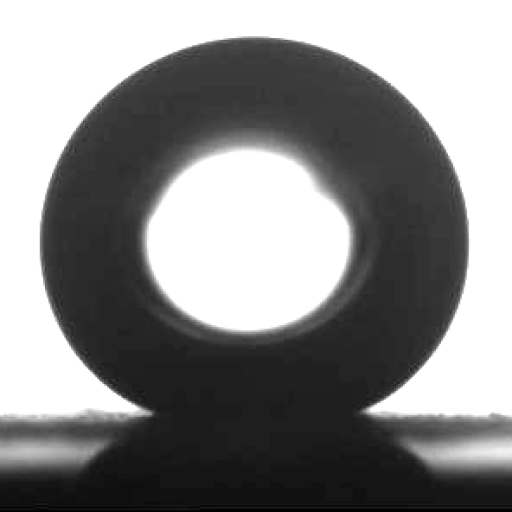Shaped-lubricant Surfaces

We have seen here that textured superhydrophobic surfaces easily shed water drops. This includes surfaces with multi-scale texturing. We can go further by infusing the smallest length scale with a lubricant [1,2]. There are two possibilities for a water droplet on one of these surfaces.
- The water droplet remains in contact with the lubricant, following the shape of the larger length-scale texture. This gives a Wenzel state in which the surface remains slippery and does not pin the droplet [3].
- The water droplet remains in contact with the lubricant at the tops of the larger length-scale texture but bridges across the air gaps in between. This gives a super-slippery superhydrophobic Cassie-Baxter state [4].
In both cases, the pattern of the underlying solid can be seen as shaping the lubricant surface [5].
Publications
- Enhanced Condensation on Lubricant-Impregnated Nanotextured Surfaces, S. Anand, A.T. Paxson, R. Dhiman, J.D. Smith and K.K Varanasi, ACS Nano 6 (2012), 10122-10129
- Hierarchical or Not? Effect of the Length Scale and Hierarchy of the Surface Roughness on Omniphobicity of Lubricant-Infused Substrates, P. Kim, M.J. Kreder, J. Alvarenga and J. Aizenberg, Nano Lett. 13 (2013), 1793-1799
- Slippery Wenzel State, X. Dai, B.B. Stogin, S. Yang and T.-S. Wong, ACS Nano 9 (2015), 9260-9267
- Superoleophobic Slippery Lubricant-Infused Surfaces: Combining Two Extremes in the Same Surface, Z Dong, M.F. Schumann, M.J. Hokkanen, B. Chang, A. Welle, Q. Zhou, R.H.A. Ras, Z. Xu, M. Wegener and P.A. Levkin Advanced Materials 30 (2018), 1803890
- Self-propelled droplet transport on shaped-liquid surfaces, G. Launay, M.S. Sadullah, G. McHale, R. Ledesma-Aguilar, H. Kusumaatmaja and G.G. Wells, Sci. Rep. 10 (2020), 14987
